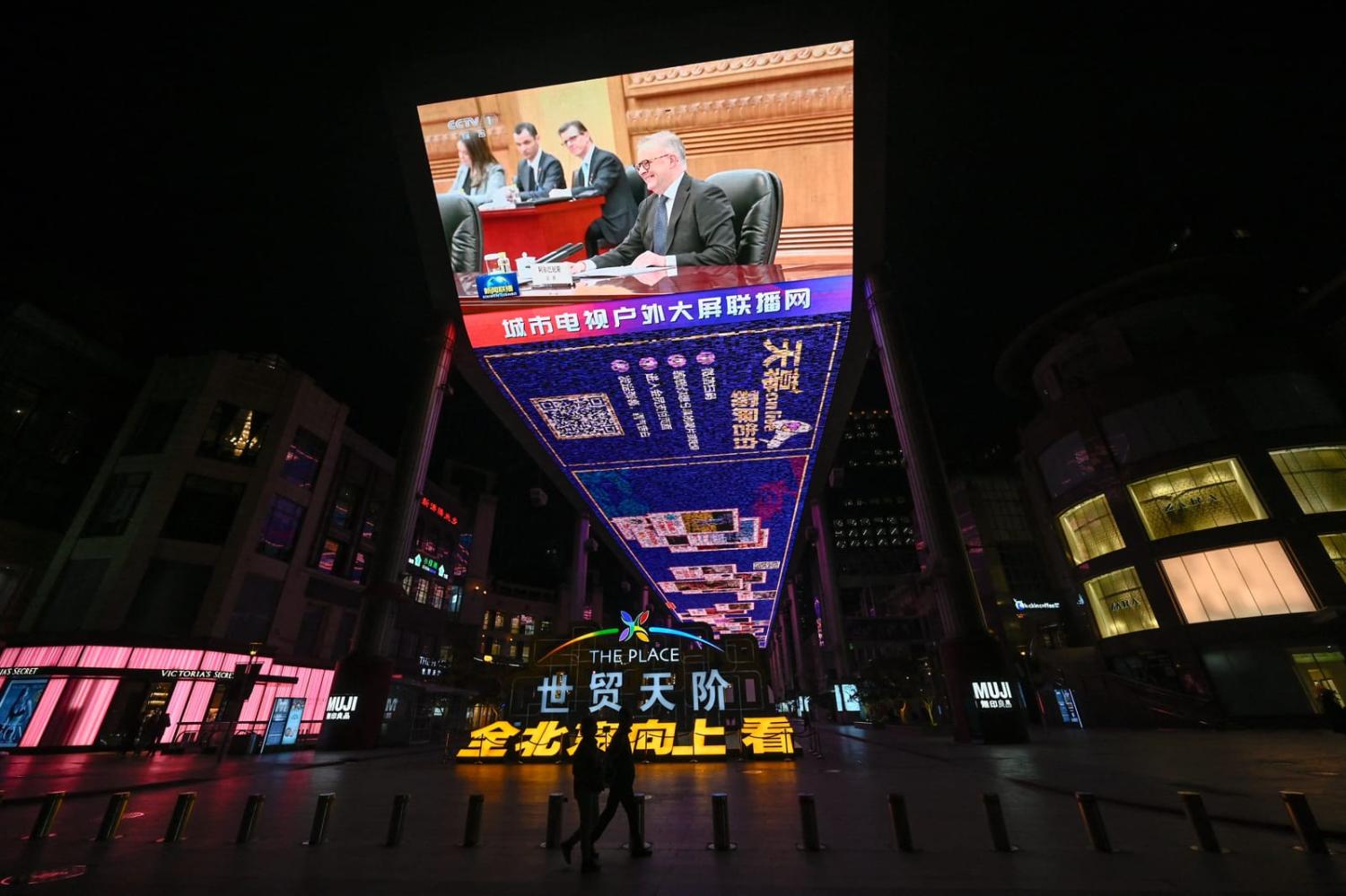In Australia’s media, Anthony Albanese’s visit to China last week was highly anticipated, the first by the country’s prime minister in seven years, with journalists and analysts closely looking for clues about the state of Australia-China relations.
But in Chinese state media, the visit didn’t generate the same amount of interest, at least via a count of media mentions.
Across five Chinese state media organisations, 63 English-language articles (with 34 duplicates) and 90 Chinese-language articles (with eight duplicates) featured the name “Albanese”/阿尔巴尼斯 over the past week, with the highest number of articles also falling on the Monday in both languages. People’s Daily, official newspaper of the Central Committee of the Chinese Communist Party, its bilingual tabloid Global Times, China Daily, Xinhua newswire, and South China Morning Post all featured different narratives about the trip and what it means for the bilateral relationship.
By contrast, in Australia, the trip garnered more than 600 mentions within Australian media publications, according to a count in the news compilation service Factiva, peaking at 311 on the Monday, when Albanese met President Xi Jinping in Beijing.
Content wise, Australian media reaction was largely positive, although acknowledging whether the trip achieves a thaw in the largely “frozen” diplomatic relations also relies upon China. So the perspectives from China’s state media offer a glimpse into the top-down rhetoric informing its public presentation.
By and large, the narrative in China’s media fell under two overarching themes. First, some outlets conveyed the sense of a mutually beneficial joint outcome, underscoring “win-win cooperation” as a signifier of the evolved relationship. Others remained cynical, as exemplified by the wolf warrior-esque tone of the Global Times, which raised questions about whether Australia would sacrifice its relationship with China to maintain US hegemony in the region.
The People’s Daily was largely positive, characterising Albanese's visit as carrying on the past to open the future, drawing parallels with the 50th anniversary of Australia’s then prime minister Gough Whitlam’s trip to China. It is intriguing to note that an article titled “Xi stresses mutual understanding” also carried a subtitle directly quoting Xi that “small circles cannot address global challenges”, alluding to group politics and bloc confrontation in the Asia-Pacific region. People’s Daily also republished several articles from Xinhua, including articles that emphasised the Albanese government’s willingness to adhere to the “One China” policy and signal a comprehensive strategic partnership towards positive, stable and constructive development.
The more hawkish tabloid Global Times echoed rhetoric it had used previously to describe Australia, as a chess piece, spearhead, or in former editor Hu Xijin’s words, a lever for the United States. As Chen Hong noted, “Is Australia really ready to play such chess, particularly when it isn’t in its best interests?” Highlighting perceived impediments posed by AUKUS and the supposed influence of the United States in fostering anti-China sentiment in Australia added to its negative tone. Also included was the economic imperative suggesting that “Australia must continue trading with China to sustain its rising standard of living”, with China seen as an irreplaceable market for Australia.
Xinhua, China’s largest media organ, was largely positive. That “China and Australia were ‘embarking’ on [the] right path of improving ties” was repeated through The State Council Information Office and CGTN. Australia’s Trade Minister Don Farrell was cited on the “wonderful opportunity” to promote Australian trade and tourism with its largest trading partner. Albanese’s visit, his seventh to China and first as PM, was highlighted against the backdrop of the China International Import Expo here and here.
The Hong Kong-based South China Morning Post presented a largely optimistic yet cautious picture of how Beijing and Canberra ties are on the right path to mend strained relations. It presented the two nations as “partners of mutual trust and fulfilment” with Albanese the first leader from the AUKUS pact group of countries to visit China since the formation of the tripartite grouping in 2021. Australia’s position on “rule-based trade” was also acknowledged.
Despite that, a debate was featured about Australia’s ability to form an independent foreign policy. It also pointedly reported comments by Premier Li Qiang about the “colossal purchasing power” of China’s 400 million middle-income consumers.
Chinese state media displayed a striking mix of caution over Australia’s political and diplomatic alignment and the hope for a “win-win” outcome. With the acknowledgement that China cannot develop in isolation, it appears that for the near-term at least, the message is that China is prepared to prioritise the economic imperative to have a more positive and stable relationship with Australia.

